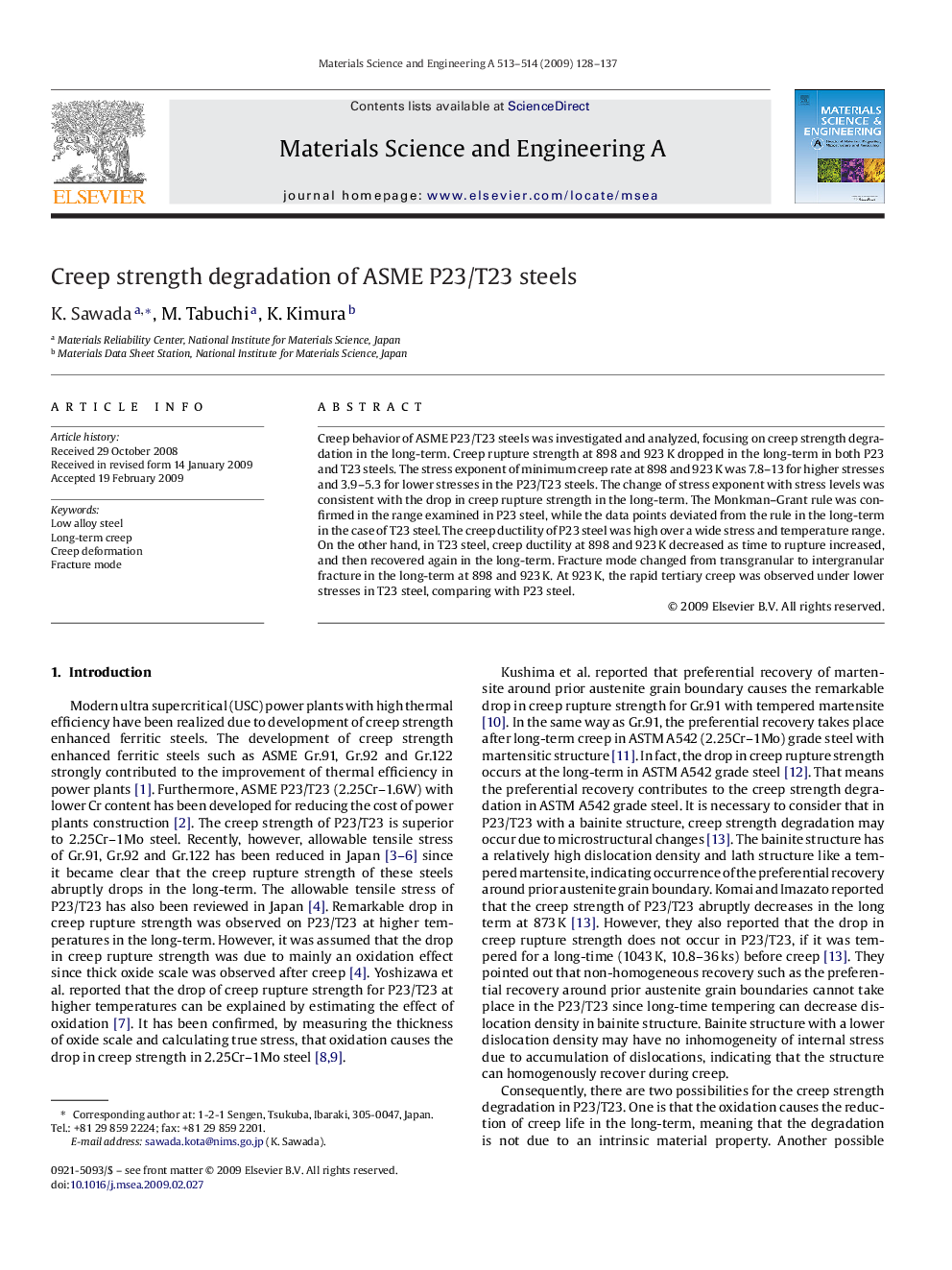| Article ID | Journal | Published Year | Pages | File Type |
|---|---|---|---|---|
| 1580467 | Materials Science and Engineering: A | 2009 | 10 Pages |
Creep behavior of ASME P23/T23 steels was investigated and analyzed, focusing on creep strength degradation in the long-term. Creep rupture strength at 898 and 923 K dropped in the long-term in both P23 and T23 steels. The stress exponent of minimum creep rate at 898 and 923 K was 7.8–13 for higher stresses and 3.9–5.3 for lower stresses in the P23/T23 steels. The change of stress exponent with stress levels was consistent with the drop in creep rupture strength in the long-term. The Monkman–Grant rule was confirmed in the range examined in P23 steel, while the data points deviated from the rule in the long-term in the case of T23 steel. The creep ductility of P23 steel was high over a wide stress and temperature range. On the other hand, in T23 steel, creep ductility at 898 and 923 K decreased as time to rupture increased, and then recovered again in the long-term. Fracture mode changed from transgranular to intergranular fracture in the long-term at 898 and 923 K. At 923 K, the rapid tertiary creep was observed under lower stresses in T23 steel, comparing with P23 steel.
